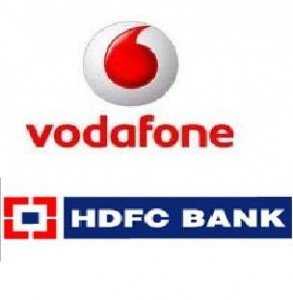HDFC bank along with telecom major Vodafone recently launched a mobile banking initiative in Jhalsu, Rajasthan- an initiative that has the power to transform the way banking is done in this country. Let us understand the initiative.

Jhalsu is a small village with population of around 3500 people and located 35 km north of Jaipur. This small village has been chosen as the place for pilot run of the mobile banking project. Vodafone has tied up with HDFC bank to pioneer this project and it is going to be monitored by RBI. The project is simple in working. Villagers will be able to receive and make payments in their bank accounts with the help of sms. A mobile banking account can be easily opened by visiting the Vodafone outlet. In order to transfer payments, the sender needs to authenticate with his pin and send a transfer through sms to the receiver’s mobile and the receiver can collect the money from the Vodafone outlet by showing the sms. In order to deposit money, the person needs to visit the outlet and deposit the amount and through sms his mobile banking account will be updated. This facility is very helpful for small traders who generally do not prefer to carry cash for safety reasons – they can now easily make payments through this method.
This arrangement has been named as “HDFC mobile bank with Vodafone m-paisa”. The traditional methods of sending money like money order are still used in a widespread manner in Indian villages. These methods charge a commission of 5% on the amount to be transferred. Moreover, scheduled commercial banks serving rural India have actually decreased over the last decade. The mobile bank serves to fill this gap. The commission will be charged at the rate of 1.5 rupees per 100 rupees being transferred which will be shared between the bank and Vodafone. The maximum amount transferable through this mechanism is Rs. 5000 and the corresponding commission chargeable is Rs. 95. This facility will initially be available in the state of Rajasthan through over 2200 Vodafone dealers across 320 villages and 54 towns before being rolled out pan India in phases.
Even Axis bank is also having a similar tie-up with IDEA cellular for launching a rural banking facility. So what brings the banking and mobile synergies together? The mobile service market in India is beginning to enter the S-curve where the growth will be slow. In order to sustain the growth the service providers will need to tap the growing potential of the rural market which has a mobile penetration of 33% – mobile banking provides a good reason for rural population to adopt this technology. Banks on the other hand will reach a huge customer base with high total value but low individual net worth : setting up its own infrastructure is expensive so mobile banking provides a solution as it uses the existing facilities of the mobile service dealers. A lot depends on the success of this pilot run for the fate of this initiative; however there is little doubt that such an innovative solution is the way forward to solve the problem of rural banking in this country.
You might like reading:
MDI Gurgaon Final Placements 2016 : Average CTC of 18.95 Lacs
MDI Gurgaon reinforced its position as one of the premier business schools in the country as it completed its Final Placements for the batch of 2014 – 2016 in 3.5 days. A total of 333 students participated in the placement process, with 237 students from the flagship PGPM course, 61 students from the PGP-HRM course, and 35 from the PGP-IM […]
Responsible Advertising: Brave and Beautiful
Advertising that takes up a cause! Women often tend to have issues with how they look! This advertisement does a fantastic job at inspiring confidence. The beauty of a woman, after all, does not lie in her looks. Every girl has a story! Every woman is beautiful! Learn to respect people for what they do.. for who they are.. Everyone […]






























